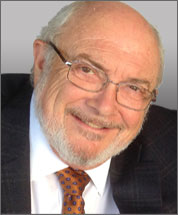Global skills shortage and how to solve the problem of a tight market?
Guest writer Sonya Law tackles a topic that is plaguing every industry write now: the global skills shortage, and how to solve the problem of a tight market.
“Be an organisation who truly understands what candidates want and values will put you ahead of the pack. Before you try to fix the talent shortage problem, be clear about your EVP (Employee Value Proposition)and how the conversation will go with prospective candidates. Work strategically and in partnership with your Talent Acquisition (TA) teams and vendors to solve this problem together. Organisations who do this well, will secure top talent now and in the future”
The problems we are facing globally are not new in staffing organisations what is new is what candidates prioritise as important. Candidates know their value in the market and are now going after what they want, we need to be both tactical and strategic on how we do this.
This shift is largely because of the pandemic and is also stress driven, those experiencing burnout are opting for roles where they can work remotely and less hours. Other considerations are there needs to be investment into management training on how we engage our remote workforce.
- Competitive Salary – Candidates know their worth in the market. Employees who are not being valued and remunerated to that level are also weighing up their options of whether to stay or go. These conversations need to be taken seriously and acted on and be part of the system of work.
- EVP – Benefits are important to candidates in their evaluation of prospective employers. What is important to the effectiveness of these programs is that they are communicated to candidates. Use of social media and particularly videos and organizational story telling are powerful tools in communicating the benefits of working with an organization.
- Flexibility – Post Pandemic candidates expect flexible, hybrid work options and opportunity to negotiate where, when and how work gets done. It is different for everyone and is not a one size fits all approach.
- Psychologically safe workplaces – Candidates want to work for organization’s who support mental health and wellbeing is important, who create space and awareness for those conversations is important. Fostering ability to have mental health conversations. Progressive organizations are investing in MHFA (Mental Health First Aid) training and removing the stigma by educating and supporting leaders on how to have supportive mental health conversations.
- Purpose, Vision, Values lead organization – Important to candidates is alignment between personal and organizational ‘purpose’ driven statements. When recruiters can have a conversation with candidates about ‘purpose’ attraction and retention of that candidate throughout the life cycle of the hire improves exponentially. It also serves to mitigate risks of offers from other prospective employers, when you have built that trust with the candidate. It is very time consuming and exhausting for a candidate to engage with multiple job offers, if you have built a good relationship, they will happily deal with you to the exclusion of others when this is achieved.
- Diversity is not just a token – Lean in, listen and learn. Organisations who do this well will differentiate themselves from other job opportunities. Be ready and prepared to have conversations about social impact and CSR (corporate social responsibility) in the interview process, give examples of where this is happening in your organization.
- Innovation – Organizations who are focused on Innovation and who have adopted innovative approach like design thinking will be ahead of the game.
- Giving and receiving feedback – radical candor does not work its brutal, we still are not doing this well. Feedback needs to be timely, specific, constructive and respectful and is more likely to be taken onboard from someone we trust. Candidates appreciate feedback and not being ghosted by HR and recruiters; we need to improve in this area. This sets a tone for how feedback is handled within your organization. There is a direct link between proactive and constructive feedback, for increased opportunities for learning, internal promotions and remuneration conversations. Feedback is important.
- Fear of failure – Optimistic organizations thrive when it comes to innovation, recognise that failure is part of learning. It’s an iterative process, what’s important is implementing a learning culture and growth mindset approach. We need to create an environment where employees can practice new skills without the fear of failure.
- Developing leaders – to build their emotional intelligence and to see themselves as a coach and to set them up for success to manage a remote workforce. Also, the democratization of learning where learning is valued and encouraged at every level. A culture that promotes that everyone is a leader in their ability to influence at every level. To foster collaboration and involve the team in what they focus on, and their goals will lead to better outcomes. Employees are more likely to take ownership of a goal when they’re involved and take responsibility for their success.
How well we do in these areas will define the success in attracting and retaining talent in a tight market now and in the future.
‘Take care of your people and they will take care of business’ Sonya Law.
Did you enjoy this blog? Read more great blog posts here.
For our course lists, please click here.


